Sarah L. Johnson's Blog, page 3
June 23, 2025
When Men Abound, Create Women, an essay by Terri Lewis, author of Behold the Bird in Flight
Welcome to Terri Lewis, who's here with an essay exploring the characters of her biographical novel, as well as their motivations. Her Behold the Bird in Flight was published this month.
~
When Men Abound, Create WomenTerri Lewis
Two sentences in a book bought at Windsor Castle introduced me to Isabelle d’Angoulême, abducted from her fiancé by King John, married, taken to England, and crowned queen. For weeks I pondered her story—what she left behind, what she faced— until it took over my imagination, and I decided to write a biographical novel.

I’m a pantser, meaning I don’t outline. I imagine my main characters, read, establish a timeline, then dive into writing. As Geraldine Brooks has said “historical fiction is taking the factual record as far as it is known, using that as scaffolding, and then letting imagination build the structure that fills in those things we can never find out for sure.”
In doing research, I encountered some surprising difficulties.
The main characters were obvious—Isabelle, John, and Hugh, her fiancé. Reams of material exist about John and his kingship. About Hugh, perhaps less, but his family included well-known crusaders and a famed castle, so even without specifics there was enough on which to build his character.
For Isabelle, the story’s heart, I found only lineage—her mother was granddaughter to a French king—and the dates of her marriage and her children’s births. The men who wrote the English chronicles provided scant and derisive mention: a harlot who caused wars and kept John in bed until noon. Those assessments I intended to upend, trusting that assiduous research would reveal a real person.
I should explain that I’ve loved medieval history since college and my shelves were heavy with books to help flesh out the story. I began with The Medieval Reader, which included letters, essays, travel journals, ballads, and religious discourse. Period documents explain everyday lives better than the usual text book dates and battles, so I’d search for information about women in 1200, a pivotal year in Isi’s life. (Yes, I’d given her a nickname.)
The book contained chapters about popes, saints, Charlemagne, and various nobles until, a hundred pages in, “Margery Kempe: Autobiography of a victimized woman.” Definitely not what I had in mind. My Isabelle would grow into strength, learn to use what little power she had, and come out a winner, as she’d done in real life. But I’d had a strong foretaste of my research: So. Many. Men.
Finding male secondary characters was easy. John was surrounded by barons and knights, some with multiple biographies, ready to step into the novel. For example, Peter De Roches, bishop of Winchester through John’s grace, or Fitzwalter who led the baron’s revolt. Terric the Teuton, to whom John wrote, urging him to keep Isabelle safe. All three make appearances in my story, but most important was William Marshal. A loyal knight and a great fighter in his youth, but by the time Isabelle arrived on the scene, old and limping. Luckily, I discovered that when he was a child, his father had handed him over as hostage to an enemy. That little anecdote animated him; I made him John’s confidant.
The women were more difficult. Isabelle’s mother merited brief historical mention because of her grandfather and her three marriages, but mothers, even unsung mothers, are important, so I struggled to build her out. Finally, deep in my reading, I discovered that courtesy books— lists of manners (written in Latin!)—were becoming popular. Perfect. I could make Maman strict, insisting that Isabelle follow the rules, learn Latin, and practice wifely skills like turning the vinegar barrels or measuring out the expensive spices.
To set the novel in motion, I created an unexpected death that sent young Isabelle to a neighboring castle for safety. Alone, among strangers, she needed friends. Historians don’t write about women’s friendships; I’d have to conjure them. Every castle teemed with cooks, laundresses, and chambermaids, but they’d be busy and unsuited. Back to my book shelf. Medieval Woman, Illuminated Book of Days depicted dozens of women preparing food, caring for the sick, or surprisingly, painting portraits. Spinning and weaving appeared often, understandable since clothes were made from scratch. I added a spinning room to the castle, filled it with women, old and young, and let Isi find companions there.
Once she had friends, I struggled to make them active. Teenage boys trained for jousts and battle; girls studied embroidery and spices, hardly the stuff of drama. However, Isabelle was almost a teenager—at the age when girls begin to wonder about sex and love—allowing me to create discussions with her best friend about kissing and the marriage bed. The friend’s answers came to shape Isi’s life.
Once Isabelle was queen, she needed a lady’s maid. Maids are historically anonymous. I decided John was jealous, pondering the fiancé left behind, so he chose a woman who would spy, a threat to hang over Isi. Then I realized the low-born maid couldn’t write to John when he traveled. Another problem to solve. I eventually killed off the spy and allowed Isabelle, who’d grown into some power, to confront John, asking for her own French maid. John ignored her.
As I struggled to bring the story to life, I often thought of novels about Tudor women or small-town English girls and their romances. Jane Austen. Philippa Gregory. How had they held my attention? The trick seemed to immerse the reader in the era. I’d read about dances and musical instruments, about church holidays and tapestry and a stray Yule log setting a room on fire. All fascinating; all impersonal.
Finally I realized Isabelle, as queen, needed to acknowledge the political unrest of early 13th century England. She needed a friend with power, to explain the wars and John’s problems with the barons, to guide her. She needed William Marshal. I’d already made him kind to her, in contrast to John. As she grew in understanding, she could work to influence John’s decisions. I was sorry she couldn’t turn to another woman for help, but only men acted in the political arena.
Behold the Bird in Flight was built on deep research for “scaffolding,” and for the fun of filling in the gaps with music, gardens, dances, and yes wars, the Pope’s interdict and the rebellious barons. But always, always creating Isabelle’s story, bringing her to life on the page..
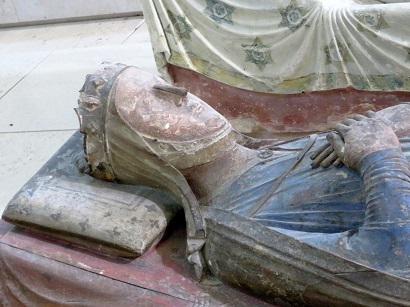 Effigy of Isabelle in the Abbey of Fontevraud. She was buried not with her husband, but with her parents-in-law, Eleanor of Aquitaine and Henry II, and her brother-in-law, Richard the Lionhearted.
Effigy of Isabelle in the Abbey of Fontevraud. She was buried not with her husband, but with her parents-in-law, Eleanor of Aquitaine and Henry II, and her brother-in-law, Richard the Lionhearted.
 Chinon Castle, a favorite of the Plantagenet kings and place where Isabelle makes a sacrifice to save someone she loves. The walkway between two sections of the castle plays an important part in the story.
Chinon Castle, a favorite of the Plantagenet kings and place where Isabelle makes a sacrifice to save someone she loves. The walkway between two sections of the castle plays an important part in the story.
~
Terri Lewis fell in love with medieval history in college. Not the dates or wars, but the mysterious daily lives of the people. Building on this love, she read and traveled widely, marveling at Europe’s preserved towns and castles. Finally, two sentences in a book bought at Windsor Castle led her to write Behold the Bird in Flight. Terri’s writing has been honed through workshops with Jill McCorkle, Laura van den Berg, and Rebecca Makkai, and she has published in literary magazines. She lives with her husband and two lively dogs in Denver, Colorado. She won the 2025 Miami University Press Novella Award.
Contact Terri:
Website: TerriLewis1.com
Facebook: Terri Lewis Author
Instagram: terri.lewis1
~
When Men Abound, Create WomenTerri Lewis
Two sentences in a book bought at Windsor Castle introduced me to Isabelle d’Angoulême, abducted from her fiancé by King John, married, taken to England, and crowned queen. For weeks I pondered her story—what she left behind, what she faced— until it took over my imagination, and I decided to write a biographical novel.

I’m a pantser, meaning I don’t outline. I imagine my main characters, read, establish a timeline, then dive into writing. As Geraldine Brooks has said “historical fiction is taking the factual record as far as it is known, using that as scaffolding, and then letting imagination build the structure that fills in those things we can never find out for sure.”
In doing research, I encountered some surprising difficulties.
The main characters were obvious—Isabelle, John, and Hugh, her fiancé. Reams of material exist about John and his kingship. About Hugh, perhaps less, but his family included well-known crusaders and a famed castle, so even without specifics there was enough on which to build his character.
For Isabelle, the story’s heart, I found only lineage—her mother was granddaughter to a French king—and the dates of her marriage and her children’s births. The men who wrote the English chronicles provided scant and derisive mention: a harlot who caused wars and kept John in bed until noon. Those assessments I intended to upend, trusting that assiduous research would reveal a real person.
I should explain that I’ve loved medieval history since college and my shelves were heavy with books to help flesh out the story. I began with The Medieval Reader, which included letters, essays, travel journals, ballads, and religious discourse. Period documents explain everyday lives better than the usual text book dates and battles, so I’d search for information about women in 1200, a pivotal year in Isi’s life. (Yes, I’d given her a nickname.)
The book contained chapters about popes, saints, Charlemagne, and various nobles until, a hundred pages in, “Margery Kempe: Autobiography of a victimized woman.” Definitely not what I had in mind. My Isabelle would grow into strength, learn to use what little power she had, and come out a winner, as she’d done in real life. But I’d had a strong foretaste of my research: So. Many. Men.
Finding male secondary characters was easy. John was surrounded by barons and knights, some with multiple biographies, ready to step into the novel. For example, Peter De Roches, bishop of Winchester through John’s grace, or Fitzwalter who led the baron’s revolt. Terric the Teuton, to whom John wrote, urging him to keep Isabelle safe. All three make appearances in my story, but most important was William Marshal. A loyal knight and a great fighter in his youth, but by the time Isabelle arrived on the scene, old and limping. Luckily, I discovered that when he was a child, his father had handed him over as hostage to an enemy. That little anecdote animated him; I made him John’s confidant.
The women were more difficult. Isabelle’s mother merited brief historical mention because of her grandfather and her three marriages, but mothers, even unsung mothers, are important, so I struggled to build her out. Finally, deep in my reading, I discovered that courtesy books— lists of manners (written in Latin!)—were becoming popular. Perfect. I could make Maman strict, insisting that Isabelle follow the rules, learn Latin, and practice wifely skills like turning the vinegar barrels or measuring out the expensive spices.
To set the novel in motion, I created an unexpected death that sent young Isabelle to a neighboring castle for safety. Alone, among strangers, she needed friends. Historians don’t write about women’s friendships; I’d have to conjure them. Every castle teemed with cooks, laundresses, and chambermaids, but they’d be busy and unsuited. Back to my book shelf. Medieval Woman, Illuminated Book of Days depicted dozens of women preparing food, caring for the sick, or surprisingly, painting portraits. Spinning and weaving appeared often, understandable since clothes were made from scratch. I added a spinning room to the castle, filled it with women, old and young, and let Isi find companions there.
Once she had friends, I struggled to make them active. Teenage boys trained for jousts and battle; girls studied embroidery and spices, hardly the stuff of drama. However, Isabelle was almost a teenager—at the age when girls begin to wonder about sex and love—allowing me to create discussions with her best friend about kissing and the marriage bed. The friend’s answers came to shape Isi’s life.
Once Isabelle was queen, she needed a lady’s maid. Maids are historically anonymous. I decided John was jealous, pondering the fiancé left behind, so he chose a woman who would spy, a threat to hang over Isi. Then I realized the low-born maid couldn’t write to John when he traveled. Another problem to solve. I eventually killed off the spy and allowed Isabelle, who’d grown into some power, to confront John, asking for her own French maid. John ignored her.
As I struggled to bring the story to life, I often thought of novels about Tudor women or small-town English girls and their romances. Jane Austen. Philippa Gregory. How had they held my attention? The trick seemed to immerse the reader in the era. I’d read about dances and musical instruments, about church holidays and tapestry and a stray Yule log setting a room on fire. All fascinating; all impersonal.
Finally I realized Isabelle, as queen, needed to acknowledge the political unrest of early 13th century England. She needed a friend with power, to explain the wars and John’s problems with the barons, to guide her. She needed William Marshal. I’d already made him kind to her, in contrast to John. As she grew in understanding, she could work to influence John’s decisions. I was sorry she couldn’t turn to another woman for help, but only men acted in the political arena.
Behold the Bird in Flight was built on deep research for “scaffolding,” and for the fun of filling in the gaps with music, gardens, dances, and yes wars, the Pope’s interdict and the rebellious barons. But always, always creating Isabelle’s story, bringing her to life on the page..
 Effigy of Isabelle in the Abbey of Fontevraud. She was buried not with her husband, but with her parents-in-law, Eleanor of Aquitaine and Henry II, and her brother-in-law, Richard the Lionhearted.
Effigy of Isabelle in the Abbey of Fontevraud. She was buried not with her husband, but with her parents-in-law, Eleanor of Aquitaine and Henry II, and her brother-in-law, Richard the Lionhearted. Chinon Castle, a favorite of the Plantagenet kings and place where Isabelle makes a sacrifice to save someone she loves. The walkway between two sections of the castle plays an important part in the story.
Chinon Castle, a favorite of the Plantagenet kings and place where Isabelle makes a sacrifice to save someone she loves. The walkway between two sections of the castle plays an important part in the story.~
Terri Lewis fell in love with medieval history in college. Not the dates or wars, but the mysterious daily lives of the people. Building on this love, she read and traveled widely, marveling at Europe’s preserved towns and castles. Finally, two sentences in a book bought at Windsor Castle led her to write Behold the Bird in Flight. Terri’s writing has been honed through workshops with Jill McCorkle, Laura van den Berg, and Rebecca Makkai, and she has published in literary magazines. She lives with her husband and two lively dogs in Denver, Colorado. She won the 2025 Miami University Press Novella Award.
Contact Terri:
Website: TerriLewis1.com
Facebook: Terri Lewis Author
Instagram: terri.lewis1
Published on June 23, 2025 05:00
June 18, 2025
Raymond Wemmlinger's The Queen's Rival tells the story of a little-known Tudor heir
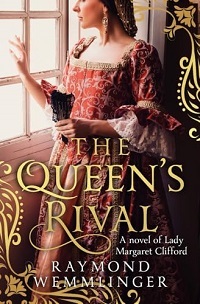 Tudormania has come and gone, but the era remains popular, and many individuals’ stories remain obscure. Such is the case with Lady Margaret Clifford, a noblewoman in the line of succession to Henry VIII’s throne; she was his grandniece, and first cousin to the ill-fated Lady Jane Grey.
Tudormania has come and gone, but the era remains popular, and many individuals’ stories remain obscure. Such is the case with Lady Margaret Clifford, a noblewoman in the line of succession to Henry VIII’s throne; she was his grandniece, and first cousin to the ill-fated Lady Jane Grey. At the outset of this lively account of her younger years, sixteen-year-old Margaret is aghast at her father’s suggestion that she consider marrying Sir Andrew Dudley, an undistinguished member of a powerful family, at her cousin Edward VI’s behest – even stomping her foot in a show of petulance. Not long after, Sir Andrew himself pays a visit to her home at Brougham Castle in northwestern England, bringing opulent gifts and ambitions she finds too irresistible to refuse.
Her superficiality and capriciousness aren’t perhaps the best introduction to a historical figure, but over the course of this short novel, Wemmlinger succeeds in showing, over time, how Margaret matures and wises up to the dangers she faces as a royal heir.
After Edward VI dies, Margaret’s marriage plans crumble, and as the country’s political and religious winds shift with the ascent of Mary I, Margaret finds herself trapped, far away from home, as one of the queen’s ladies in waiting. Here, she’s forced to remain on Queen Mary’s good side, which she skillfully manages, but she finds court life boring and wonders if she’ll ever be allowed to wed.
The straightforward narration and familiarity with the well-detailed historical background make for a quick, involving read. Particularly moving is Margaret’s growing empathy for her late mother, Eleanor Brandon, who died in her late twenties. While the premise that many young Tudors were poisoned by rival claimants is the author’s invention, it remains true that survival was precarious in these treacherous times.
Wemmlinger's first novel was Booth's Daughter (2007), biographical fiction about Edwina Booth, daughter of Edwin, a noted American actor of his day, and niece of John Wilkes. It's a book I'm interested in reading, after reading Karen Joy Fowler's Booth recently. His online bio at his publisher, Sapere Books, notes that he's long been an aficionado of the Tudors, especially royal women who have gone overlooked. This was a personal purchase that I'd reviewed initially for the May issue of Historical Novels Review, and there are currently three more in the series. I'd gladly read another. The later life of Margaret Clifford (later Margaret Stanley) arguably reflects the book's title better than this storyline does.
Published on June 18, 2025 06:30
June 13, 2025
The latest trend in historical fiction: the 1960s
Has everyone come around to the realization that novels written now and set in the '60s are considered historical fiction? Even more, this tumultuous era is the hottest thing in the genre, with themes zeroing in on civil rights, the counterculture movement, women's empowerment in the workplace and at home, and the Vietnam War. One of my guest contributors had called this, over a decade ago, and if you haven't read Richard Sharp's engaging essay "The Sixties: The New Frontier for Historical Fiction," I think you'll find it rings just as true today. "There are many shelves to fill," he wrote (in 2014) about the scarcity of fiction that grappled with the complexity of the era. Now, it seems, an increasing number of authors are beginning to do so, recreating the fabric of the times for readers who didn't live through it (as well as those who did). The fourteen novels below focus on women's experiences, generally speaking. Needless to say, many social issues from the '60s are still very relevant.
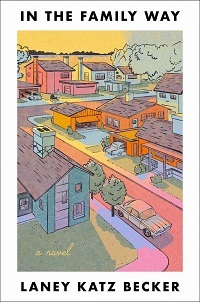
In 1965, a cast of suburban women struggles with complex personal and family issues, with unexpected changes arising after a pregnant teen moves in with a Jewish couple and their family, in order to help out after they learn they're expecting a second child. Harper, June 2025.

Friendship, jealousy, competition, and betrayal form the backdrop to the complicated relationship between two female writers in the star-studded atmosphere of 1960s Los Angeles. Berkley, August 2025.
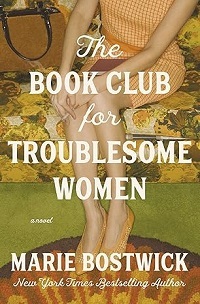
Members of book club for suburban housewives in early '60s Virginia awaken to the empowering possibilities of feminism after reading and sharing thoughts about Betty Friedan's groundbreaking and controversial new book, The Feminine Mystique. Harper Muse, April 2025.
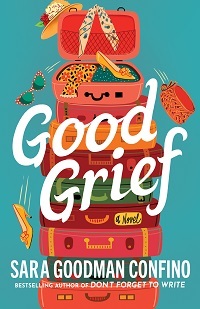
After Ruth Feldman overstays her welcome at her daughter-in-law's home, the two women, both widows grieving their late husbands, struggle to get along but may find a way of moving forward in quietly playing matchmaker for the other. Gently humorous family-centered fiction set in 1963. Lake Union, August 2025.
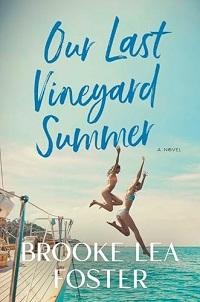
Summer by the water on sun-kissed Martha's Vineyard: what could be more relaxing? Not so much for a Columbia grad student who returns home at her mother's request and uncovers old family secrets; a split-time novel (1965 and 1978). Gallery, July 2025.
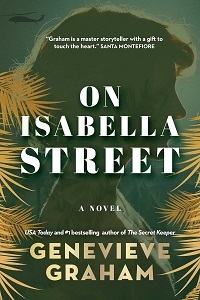
Graham, a bestselling Canadian novelist, sets her latest novel in '67 Toronto and overseas in Vietnam as two women living in the same apartment building deal with personal, political, and social turmoil in the city they call home. Simon & Schuster Canada, April 2025.
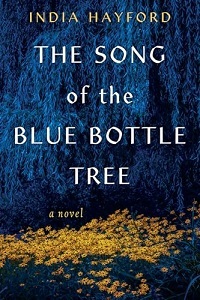
In this novel of survival and resilience, set in 1967, an independent young woman who can see ghosts returns to her long-estranged ancestral home in Arkansas, meets up with a Vietnam vet, and finds herself unexpectedly craving interpersonal connections. Kensington, March 2025.
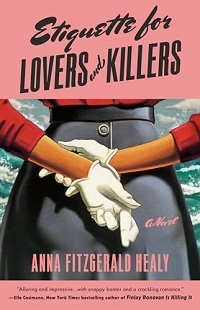
Promoted as "a love letter to uncivilized behavior," Healy's debut novel, set in 1964, features a young woman in sleepy small-town Maine who stumbles upon a series of domestic mysteries that soon escalate into serious trouble. Sounds fun. Putnam, July 2025.
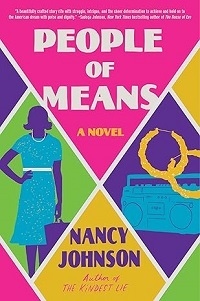
A young college student in Jim Crow-era Georgia and her daughter, a professional woman in 1992 Chicago, decide what risks to take in the interest of racial justice. William Morrow, February 2025.
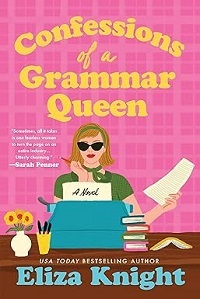
The illustrated cover art for Knight's new historical has a cool vibe. The sexist, male-dominated publishing industry in 1960s New York may have met its match in copyeditor Bernadette Swift, who strives to become a CEO. Sourcebooks, June 2025.
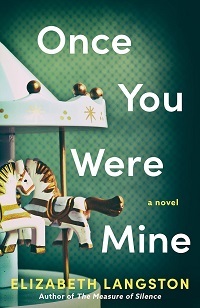
In this dual-period family drama set in 1968 and the present day, a modern genealogical researcher looking into her mother's family tree uncovers generations-old secrets in a small North Carolina town. Lake Union, February 2025.
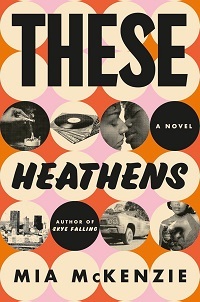
Doris Steele, a Black teenager in 1960s Georgia who's shocked to realize she's expecting a baby, travels to Atlanta with her former teacher for an abortion and has her eyes opened wide to experiences that would be considered scandalous back home. Random House, June 2025.
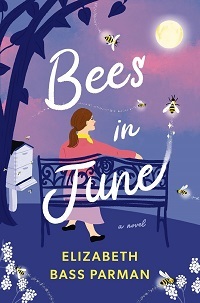
There may be a bit of magic in this tale of self-discovery and hope featuring a grieving mother in an abusive marriage in small-town Tennessee whose world opens up after she begins employment as a cook at a local diner. Set in 1969. Harper Muse, September 2025.
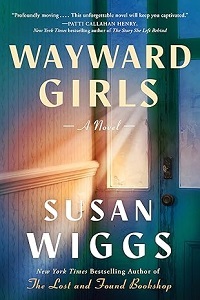
Each of the six teenage girls in Wayward Girls was confined to the Good Shepherd Catholic reform school in 1968 Buffalo, New York, for different reasons, and forced to work in the institution's laundry. Can they band together to pursue justice and set themselves free? William Morrow, July 2025.

In 1965, a cast of suburban women struggles with complex personal and family issues, with unexpected changes arising after a pregnant teen moves in with a Jewish couple and their family, in order to help out after they learn they're expecting a second child. Harper, June 2025.

Friendship, jealousy, competition, and betrayal form the backdrop to the complicated relationship between two female writers in the star-studded atmosphere of 1960s Los Angeles. Berkley, August 2025.

Members of book club for suburban housewives in early '60s Virginia awaken to the empowering possibilities of feminism after reading and sharing thoughts about Betty Friedan's groundbreaking and controversial new book, The Feminine Mystique. Harper Muse, April 2025.

After Ruth Feldman overstays her welcome at her daughter-in-law's home, the two women, both widows grieving their late husbands, struggle to get along but may find a way of moving forward in quietly playing matchmaker for the other. Gently humorous family-centered fiction set in 1963. Lake Union, August 2025.

Summer by the water on sun-kissed Martha's Vineyard: what could be more relaxing? Not so much for a Columbia grad student who returns home at her mother's request and uncovers old family secrets; a split-time novel (1965 and 1978). Gallery, July 2025.

Graham, a bestselling Canadian novelist, sets her latest novel in '67 Toronto and overseas in Vietnam as two women living in the same apartment building deal with personal, political, and social turmoil in the city they call home. Simon & Schuster Canada, April 2025.

In this novel of survival and resilience, set in 1967, an independent young woman who can see ghosts returns to her long-estranged ancestral home in Arkansas, meets up with a Vietnam vet, and finds herself unexpectedly craving interpersonal connections. Kensington, March 2025.

Promoted as "a love letter to uncivilized behavior," Healy's debut novel, set in 1964, features a young woman in sleepy small-town Maine who stumbles upon a series of domestic mysteries that soon escalate into serious trouble. Sounds fun. Putnam, July 2025.

A young college student in Jim Crow-era Georgia and her daughter, a professional woman in 1992 Chicago, decide what risks to take in the interest of racial justice. William Morrow, February 2025.

The illustrated cover art for Knight's new historical has a cool vibe. The sexist, male-dominated publishing industry in 1960s New York may have met its match in copyeditor Bernadette Swift, who strives to become a CEO. Sourcebooks, June 2025.

In this dual-period family drama set in 1968 and the present day, a modern genealogical researcher looking into her mother's family tree uncovers generations-old secrets in a small North Carolina town. Lake Union, February 2025.

Doris Steele, a Black teenager in 1960s Georgia who's shocked to realize she's expecting a baby, travels to Atlanta with her former teacher for an abortion and has her eyes opened wide to experiences that would be considered scandalous back home. Random House, June 2025.

There may be a bit of magic in this tale of self-discovery and hope featuring a grieving mother in an abusive marriage in small-town Tennessee whose world opens up after she begins employment as a cook at a local diner. Set in 1969. Harper Muse, September 2025.

Each of the six teenage girls in Wayward Girls was confined to the Good Shepherd Catholic reform school in 1968 Buffalo, New York, for different reasons, and forced to work in the institution's laundry. Can they band together to pursue justice and set themselves free? William Morrow, July 2025.
Published on June 13, 2025 10:30
June 5, 2025
Tragedy and resilience in Vanessa Miller's The Filling Station
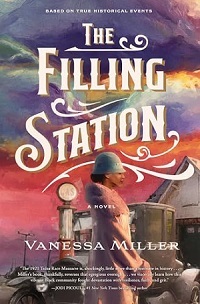 In the early 20th century, the Greenwood district of Tulsa, Oklahoma, was home to numerous Black-owned businesses and a thriving African American community. Then came the devastation beginning on the night of May 31, 1921, when white supremacist mobs – including local law enforcement – rampaged and burned the entire neighborhood and killed dozens of residents.
In the early 20th century, the Greenwood district of Tulsa, Oklahoma, was home to numerous Black-owned businesses and a thriving African American community. Then came the devastation beginning on the night of May 31, 1921, when white supremacist mobs – including local law enforcement – rampaged and burned the entire neighborhood and killed dozens of residents. In a novel evoking both the worst and most generous impulses of human nature, Vanessa Miller shines a light on the aftermath of the Tulsa Race Massacre, laying bare the survivors’ long, hard-fought road to regain strength and faith.
Margaret and Evelyn Justice, daughters of a prosperous grocery store owner, are young women with dreams; Margaret plans to start teaching high school history, while Evie, a talented eighteen-year-old seamstress, wants to become a clothing designer. Left homeless after the fires, their beloved father missing, the sisters start walking out of town and land at the Threatt Filling Station (a real place on Route 66), which their Daddy had recognized as a safe haven for Black travelers.
The proprietors, Mr. Allen and Mrs. Alberta Threatt, take in Margaret and Evie. The sisters have always been close, but their lives soon begin diverging. Margaret determines to see Greenwood rise again, wanting to rebuild as soon as possible, while Evie feels too scared to ever return.
The roadblocks they encounter (insurance denials are just the beginning) are infuriating, though Margaret is bolstered by the support of the Threatts and a caring farmer, Elijah, who has great faith in God. Through Miller’s skillful writing, we see the filling station not only as a notable landmark, one deserving of all Americans’ attention, but as a superb metaphor for the people and places that replenish the spirit, if we have the courage to let them in. Definitely recommended.
I reviewed The Filling Station for May's Historical Novels Review; the novel was published by Thomas Nelson in March. This novel and its subject exemplify how the past is still very much with us. A few days ago, on June 1, 2025, the mayor of Tulsa announced a plan of reparations, in the amount of $105 million, to go toward restoring the Greenwood neighborhood (which was later termed "Black Wall Street") and the devastating impact its destruction had, and continues to have, on residents.
There are two living survivors of the massacre, aged 110 and 111, both of whom had made statements included within a report undertaken by the Department of Justice's Civil Rights Division and published this past January. This report, which you can read in full online, concluded that the attack was "systematic and coordinated," contradicting the original, cursory 1921 report that called it uncontrolled mob violence. This report marked the first full accounting of the event by the DOJ, over a century after it happened.
 The Threatt Filling Station, Luther, OK
The Threatt Filling Station, Luther, OKcredit: Melodibit, CC BY-SA 3.0, via Wikimedia Commons
The Threatt Filling Station in Luther, Oklahoma, is on the National Register of Historic Places and was also listed as one of America's 11 Most Endangered Places by the National Trust for Historical Preservation in 2021. The family runs a foundation and website at https://threattfillingstation.org.
Published on June 05, 2025 03:30
June 1, 2025
An illustrious American family and its stain: Karen Joy Fowler's Booth
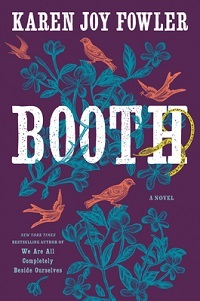 The 19th-century Booth family had once been known by the American public for something other than their second youngest son’s heinous act.
The 19th-century Booth family had once been known by the American public for something other than their second youngest son’s heinous act.To give us back the historical context that's been eclipsed by his notoriety, Karen Joy Fowler purposefully avoids making John Wilkes, the assassin of President Lincoln, the center of attention in her profusely detailed work of biographical fiction. She does this by alternating the viewpoints among three of his siblings.
They are: oldest daughter Rosalie, a modest and dreamy teenager who settles into a future where her personal choices are erased; the adventurous Edwin, who rises to become a prominent actor but can’t seem to outrun his unstable father’s shadow; and Asia, a prickly, temperamental young woman and a loyal sister.
Beginning in 1822, their family life in a two-room log cabin, thirty miles northeast of Baltimore, is highly eventful. The father, Junius Booth, is a famous Shakespearean actor, a strict vegetarian who alternates between drunkenness and sobriety both on stage and off. Their mother Mary Ann, a former Drury Lane flower seller, is perpetually pregnant. They have ten children in all, including the four dead ones whose ghosts only Rosalie can sense. Fowler shows how their birth order affects their outlook and upbringing.
There’s a good reason why the Booths’ cabin is so secluded, though the children don’t know it until much later. Still, they aren’t living alone in the woods, since their father employs a free Black man and leases other enslaved people to help with the farm. The fate of the Hall family – some enslaved, some free – intertwines with theirs.
Over time, we see firsthand how son John’s views on slavery diverge from that of his mother, who believes in the dignity of all people. A fortune-teller makes a chilling prophecy about John’s future, and it’s startling to realize that her words are repeated verbatim from history.
With its close documentation of the family’s day-to-day lives – the alliances, disruptions, scandals, and personal trials they face – the atmosphere is immersive. The pacing is steady, if plodding at times, and the characterizations of the individual Booths and America as a nation during a volatile era are standouts. I took a break midway through to read two other novels, but found myself drawn back to finish it, and am glad I did.
Booth was published by G.P. Putnam's Sons in 2022. I'm slowly getting to reading long-outstanding books in my NetGalley queue, and this is one of them.
Published on June 01, 2025 06:00
May 27, 2025
Alison Weir's The Cardinal presents the public and secret lives of Tudor statesman Thomas Wolsey
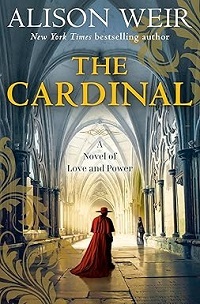 Born an innkeeper’s son, Thomas Wolsey rose spectacularly to become a Catholic cardinal and Henry VIII’s principal advisor. Weir’s (The Passionate Tudor, 2024) newest biographical novel departs from royal protagonists to present an intimate, adroitly multifaceted portrait of the man (here called Tom) who devoted his career to serving Henry’s interests but whose failure to engineer the annulment of Henry’s first marriage caused his disgrace.
Born an innkeeper’s son, Thomas Wolsey rose spectacularly to become a Catholic cardinal and Henry VIII’s principal advisor. Weir’s (The Passionate Tudor, 2024) newest biographical novel departs from royal protagonists to present an intimate, adroitly multifaceted portrait of the man (here called Tom) who devoted his career to serving Henry’s interests but whose failure to engineer the annulment of Henry’s first marriage caused his disgrace. Reliably meticulous, Weir takes readers through Tom’s growing influence, showing how his ambitions led him to the priesthood and how his acumen with foreign policy made him indispensable to Henry while igniting the nobility’s resentment. She dexterously interweaves the political and personal, like Tom’s love for his mistress Joan Larke, which he hates keeping secret, and his close, paternal friendship with Henry.
Through Weir’s controlled storytelling, readers’ sympathy for Tom fluctuates throughout; one admires his administrative brilliance while cringing at his astonishing accumulation of riches, which he feels he deserves. Weir plows familiar ground with Henry’s divorce from Katherine of Aragon, but seeing it from Tom’s viewpoint provides additional insights.
The Cardinal is published today by Ballantine in the US; Headline Review is the UK publisher. I wrote this review for the May 1 issue of Booklist.
Read more about the background to the novel on the author's website. There will be a related ebook, a short story called The Cardinal's Daughter, out for UK-only release on October 23. According to details posted to her page, Weir explains her publisher's reasoning for not offering her e-shorts for sale on Amazon.com directly. The earlier e-shorts published alongside her Six Tudor Queens novels can be purchased as a full-length book, In the Shadow of Queens , from UK retailers.
Published on May 27, 2025 08:00
May 22, 2025
A forgotten Egyptian goddess: Rachel Louise Driscoll's The House of Two Sisters
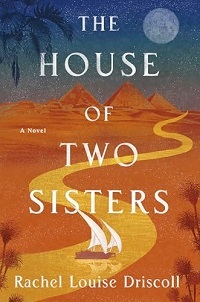 Do you believe in curses? Might you be convinced of their reality if terrible things befell you and your family after an unheeded warning?
Do you believe in curses? Might you be convinced of their reality if terrible things befell you and your family after an unheeded warning?In Rachel Louise Driscoll’s elaborately woven debut, Clementine Attridge, daughter of an Egyptologist, was already inclined to accept the power of curses’ dark magic. Introverted yet strong-willed, Clemmie grew up immersed in myths, acting out scenarios about the sister-goddesses Isis and Nephthys during childhood playtime, and developed an expertise in hieroglyphs. At eighteen, she assists her father during his famous mummy-unwrapping parties: macabre entertainment for Victorian society gripped by all things Egyptian.
But after Clemmie translates the threatening inscription on an amulet found with an unusual mummified specimen, and her father disturbs the remains anyway, their lives are destroyed bit by bit. Five years later, she arrives in Cairo, desperate to hire a dahabeeyah – river barge – to carry her up the Nile and make amends before it’s too late.
The novel’s symbolism, drawing parallels between ancient deities and Clemmie’s family, is deep, rich, and extensive. It’s especially meaningful as it addresses Clemmie’s self-identification with the less-familiar sister: “For she is the Nephthys of her story, invisible and forgotten, and had she been a little more like Isis, then maybe her father would have listened to her.”
The storyline alternates between 1887 – the year of the “unwrapping” – and Clemmie’s journey in 1892, as she and a group of English visitors (whose company she reluctantly accepts) head upriver to Denderah. With the frequent circling back to five years ago and the time needed to establish context, the plot moves forward at a slowish pace, at least in the first half.
While the background detail will be catnip for Egyptology buffs (and cats are important characters!), the novel is as much an interior adventure as a voyage through the country and its storied culture. The characters, English and Egyptian, are a diverse sort, some more fully sketched than others. To allow for greater surprises, few specifics about the cast will be mentioned here, but the mythology provides hints.
For readers wanting to be transported into an earlier time, The House of Two Sisters places you amidst the Egyptomania craze of late 19th-century England and the exploitation of relics from the country’s past, both material and human. Moody and unsettling, this is a well-wrought Egyptian gothic with an echoing message about the ethics of people’s obsessions.
The House of Two Sisters will be published by Ballantine in June, and I read it from a NetGalley copy. The UK edition, published by Harvill Secker in February, is titled, very appropriately, Nephthys.
Published on May 22, 2025 06:30
May 19, 2025
A Leg to Stand On, a guest post by Nell Joslin, author of Measure of Devotion
Nell Joslin, author of the Civil War-era novel Measure of Devotion (Regal House, May 2025). contributes a short essay about how validation for one's writing choices can arrive in unexpected ways.
~
A Leg to Stand OnNell Joslin
 In the fall of 2015, I had been working on Measure of Devotion off and on for more than two years and was feeling discouraged about my ability to write anything worthwhile. It was a difficult time in general; not long before, I had lost my father and I was caring for my mother, then in the final year of her life.
In the fall of 2015, I had been working on Measure of Devotion off and on for more than two years and was feeling discouraged about my ability to write anything worthwhile. It was a difficult time in general; not long before, I had lost my father and I was caring for my mother, then in the final year of her life.
Looking for inspiration, I decided to attend a Civil War reenactment of the battles of Lookout Mountain and Missionary Ridge. I scrounged up enough enthusiasm to buy a period costume, register as a spectator, and find a place to stay in the area near Chattanooga where the events would take place. I even paid for a ticket to the “ball” planned for the evening after the “battles.”
I soon saw that it was a mistake to think the reenactment would be helpful. The solitary nature of this jaunt, combined with my gloomy mood, piled loneliness on top of self-doubt. The war reenactors seemed even more wooden to me than the characters in my novel. And although many others were similarly attired, I felt foolish and awkward in my 1860s dress and shawl.
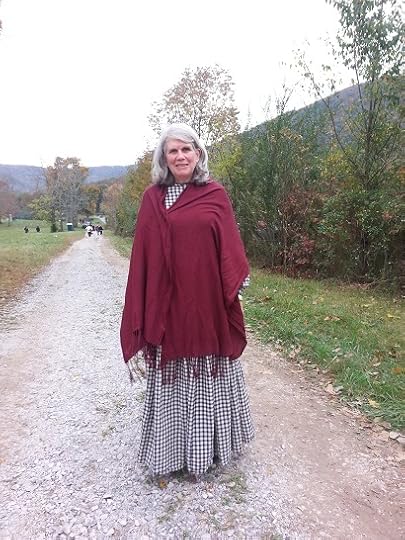
My characters are very loosely based on some much-revered ancestors. One of my great-grandfathers was gravely wounded at the hip in the Chattanooga area in 1863, but there most of his similarity with my book’s Civil War soldier ended. I had plucked the tiniest thread of the real story and taken it in a completely new direction. I was inventing wholly new people who did some very surprising—shocking—things. In the attempt to be creative, was I simply disrespectful? Blasphemous?
On the last evening of my visit in the reenactment area, I took a late afternoon walk along the little-traveled gravel road that ran in front of my cabin, trying to decide whether to begin the eight-hour drive back home or wait until the following morning.
I had been looking up at the darkening sky through the bare branches of trees, but suddenly something made me look down at my feet. There by the side of the road was the leg of a GI-Joe-type doll. No sign of the rest of the doll’s body, no other litter on the ground in this woodsy, tranquil setting.

I picked the leg up. The area around the hip bore a black smudge and the “ligament” which had attached it to the body was severed.
This, I decided, was a seal of affirmation. “Honey, this story is yours,” my long-ago great-grandfather was telling me. “You go ahead and write it any way you like.”And by golly, I would.
~
NELL JOSLIN is a native of Raleigh, North Carolina and received her MFA from North Carolina State University. Besides a fiction writer, she has been a public school teacher, medical librarian, copy editor, freelance journalist, stay-at-home mom and attorney (although not all at the same time). She currently lives in Raleigh. For more details, please see: Nell Joslin – Measure of Devotion
~
A Leg to Stand OnNell Joslin
 In the fall of 2015, I had been working on Measure of Devotion off and on for more than two years and was feeling discouraged about my ability to write anything worthwhile. It was a difficult time in general; not long before, I had lost my father and I was caring for my mother, then in the final year of her life.
In the fall of 2015, I had been working on Measure of Devotion off and on for more than two years and was feeling discouraged about my ability to write anything worthwhile. It was a difficult time in general; not long before, I had lost my father and I was caring for my mother, then in the final year of her life. Looking for inspiration, I decided to attend a Civil War reenactment of the battles of Lookout Mountain and Missionary Ridge. I scrounged up enough enthusiasm to buy a period costume, register as a spectator, and find a place to stay in the area near Chattanooga where the events would take place. I even paid for a ticket to the “ball” planned for the evening after the “battles.”
I soon saw that it was a mistake to think the reenactment would be helpful. The solitary nature of this jaunt, combined with my gloomy mood, piled loneliness on top of self-doubt. The war reenactors seemed even more wooden to me than the characters in my novel. And although many others were similarly attired, I felt foolish and awkward in my 1860s dress and shawl.

My characters are very loosely based on some much-revered ancestors. One of my great-grandfathers was gravely wounded at the hip in the Chattanooga area in 1863, but there most of his similarity with my book’s Civil War soldier ended. I had plucked the tiniest thread of the real story and taken it in a completely new direction. I was inventing wholly new people who did some very surprising—shocking—things. In the attempt to be creative, was I simply disrespectful? Blasphemous?
On the last evening of my visit in the reenactment area, I took a late afternoon walk along the little-traveled gravel road that ran in front of my cabin, trying to decide whether to begin the eight-hour drive back home or wait until the following morning.
I had been looking up at the darkening sky through the bare branches of trees, but suddenly something made me look down at my feet. There by the side of the road was the leg of a GI-Joe-type doll. No sign of the rest of the doll’s body, no other litter on the ground in this woodsy, tranquil setting.

I picked the leg up. The area around the hip bore a black smudge and the “ligament” which had attached it to the body was severed.
This, I decided, was a seal of affirmation. “Honey, this story is yours,” my long-ago great-grandfather was telling me. “You go ahead and write it any way you like.”And by golly, I would.
~
NELL JOSLIN is a native of Raleigh, North Carolina and received her MFA from North Carolina State University. Besides a fiction writer, she has been a public school teacher, medical librarian, copy editor, freelance journalist, stay-at-home mom and attorney (although not all at the same time). She currently lives in Raleigh. For more details, please see: Nell Joslin – Measure of Devotion
Published on May 19, 2025 04:30
May 16, 2025
Review of Nicola Cornick's The Secrets of the Rose, set during the Jacobite Rebellion of 1715
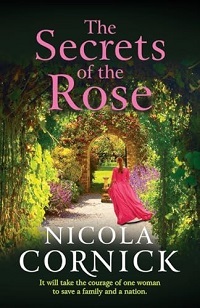 Nicola Cornick writes dual-period novels about unjustly forgotten women where both narrative strands compel equally, which doesn’t happen often. Fans of Mary Stewart (Touch Not the Cat in particular), Anya Seton’s Devil Water, and Susanna Kearsley’s 18th-century epics will relish her latest, which tells the parallel stories of purported Jacobite heroine Dorothy Forster and a modern biographer who grew up in Dorothy’s family home.
Nicola Cornick writes dual-period novels about unjustly forgotten women where both narrative strands compel equally, which doesn’t happen often. Fans of Mary Stewart (Touch Not the Cat in particular), Anya Seton’s Devil Water, and Susanna Kearsley’s 18th-century epics will relish her latest, which tells the parallel stories of purported Jacobite heroine Dorothy Forster and a modern biographer who grew up in Dorothy’s family home.Hannah Armstrong returns to Bamburgh Hall in Northumberland with plans to research local heroine Grace Darling but gets more intrigued by Dorothy, especially after finding Dorothy’s enigmatic portrait at the Hall, surrounded by Jacobite motifs. Hannah’s stepmother, Diana, initially encourages her interest in Dorothy but oddly changes her mind later. According to legend, Dorothy took a late-night ride to London to liberate her Jacobite brother from prison and held a fake funeral for him, abetting his escape, and Hannah wonders if this daring adventure was true.
In 1715, Dorothy, who oversees her ill father’s household, gets fed up with male power games after learning about a planned Jacobite rebellion that has her eldest brother, Tom, among the plotters. She foresees only disaster and fears retribution. A touch of mysticism enhances the rich atmosphere. In her youth, Dorothy shared a telepathic bond with a boy whose identity she never knew. Possibly it was the Earl of Derwentwater, her charming near-betrothed, or maybe it was blacksmith John Armstrong.
Various layers of Bamburgh’s thrilling history reveal themselves here, dating from periods before Uhtred’s Bebbanburgh through the present. Among other sites, we get to visit the imposing castle and rocky coastline, with gorgeous views of the Farne Islands in the distance. Both protagonists have haunting, slow-burning love stories, but the 1715 Rising itself is not romanticized. Rather, Cornick demonstrates the courage of women forced to confront turmoil caused by foolish men.
The Secrets of the Rose was published by Boldwood Books in February; I reviewed it from NetGalley for May's Historical Novels Review. Among the other novels by Nicola Cornick I've reviewed here are The Phantom Tree and The Other Gwyn Girl , and I'd interviewed the author about her House of Shadows in 2015. I'm eager to see what she'll be writing about next.

 Photos of Bamburgh Castle (2014), by Mark Johnson
Photos of Bamburgh Castle (2014), by Mark JohnsonIt was a treat to read more about the history surrounding Bamburgh in Northumberland after having visited there in 2014. The photos just above were taken by my husband, and there are some more in his Flickr album. One day I hope to go back!
Published on May 16, 2025 11:53
May 10, 2025
Rita Woods' The Edge of Yesterday is a riveting time-travel novel set in the Motor City
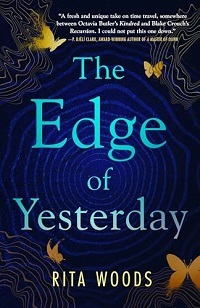 Set in Detroit in the present and a century earlier, Rita Woods’ gripping timeslip novel explores two people’s yearnings for a different future, the inexplicable link they share, and the ripple effects of seemingly small changes. In short: the more you mess with time, the more it’ll mess with you.
Set in Detroit in the present and a century earlier, Rita Woods’ gripping timeslip novel explores two people’s yearnings for a different future, the inexplicable link they share, and the ripple effects of seemingly small changes. In short: the more you mess with time, the more it’ll mess with you.Formerly a member of a New York-based Black ballet company, Greer McKinney has returned with her husband, Bass, to Detroit after distressing neurological symptoms made her quit working. Temporarily staying in one of her wealthy in-laws’ properties, Greer despairs over her life amid escalating arguments with Bass.
Then one day, while on her way to visit a friend, she gets briefly zapped into the past – the special effects feel disorientingly real – and glimpses a bustling street scene and a tall man in old-fashioned clothing.
In 1925, Dr. Montgomery “Monty” Gray is a member of the “Talented Tenth,” a group of well-educated, socially aware Black leaders. With this role comes responsibilities, including marrying his best friend Aggie, a woman within his class. Racial strife is heating up, and when a gangster crashes their engagement party, challenging people to rise up against whites who terrorize African Americans who cross the color line, Monty foresees a terrible reckoning.
Greer’s startling trips back to 1925, which she comes to seek out, are mutually valued. Monty is amazed to learn a Black man will be President, while Greer’s health improves every time she returns home to 2025. Problem is, other aspects of her life change, too.
Both storylines are individually interesting, and the plot and atmosphere turn electric when they intersect. One small criticism: the book wraps up too quickly. While illustrating the vitality of the early 20th-century Black Bottom-Paradise Valley neighborhood, which was demolished decades later for redevelopment, Woods delivers an exciting work of speculative fiction with many hard-to-predict twists.
The Edge of Yesterday was published by Forge in late April, and I reviewed it for May's Historical Novels Review. I've heard little about this novel in historical fiction circles, and it's worth checking out! Read more about the history of Paradise Valley in the online Encyclopedia of Detroit and in the Black Bottom Digital Archive. I'd previously reviewed the author's debut, Remembrance, after its publication in 2020.
Published on May 10, 2025 05:30



